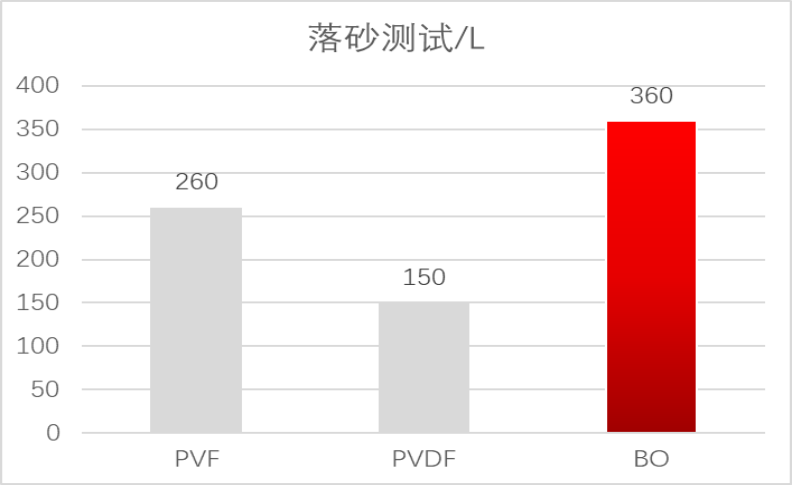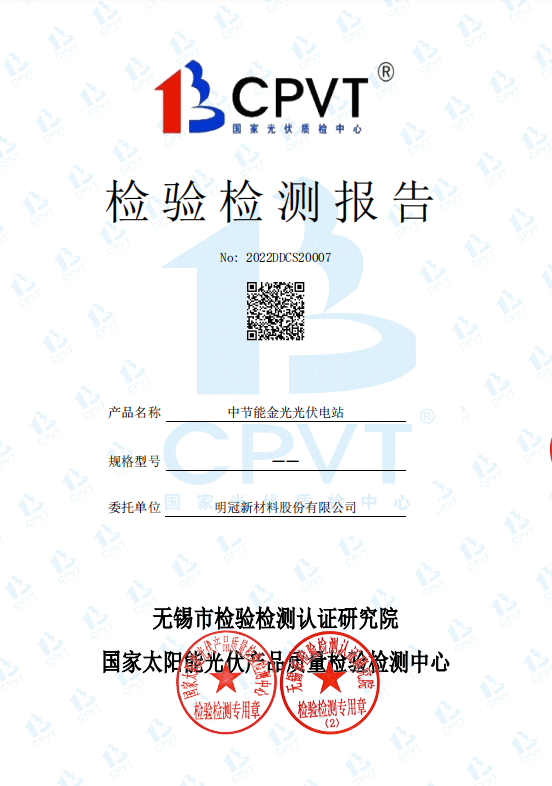From downtown Jiuquan, we travelled 20 km to arrive at the Dongdongtan PV Power Station Industry Park in Suzhou District.

Before 2020, it was an area of the Gobi Desert with rampant sandstorms. Today, however, large fields of PV modules stand here. They improve the local climatic conditions and convert solar energy into green electric energy to boost regional economic development.
A central government-owned enterprise’s 74MW grid-connected PV power generation project is located here. According to the staff, this place has a high elevation, relatively few rainy days, long sunshine duration, excellent atmospheric transparency and abundant solar energy resources, so it is an ideal location for a PV power station. "The project commenced in 2019 and was connected to the grid in 2020. From the beginning of this year to date, the power station has generated 56.51 million kWh of electricity, which is clearly higher than expected.”
PV systems need to be installed in various complex environments including deserts and coastal beaches, which poses great challenges for the reliability of all the components and raw materials. According to a product expert who has been in this industry for nearly 20 years, some power stations in the Gobi Desert experienced a backsheet cracking problem because they underestimated the impact of perennial sandstorms and strong UV radiation, and the materials were not sufficiently durable. “As the installed capacity of PV power stations increases, more attention must be paid to PV materials. We need to guarantee the long service life and high reliability of the products while also taking the environmental impact into account and preparing for the recycling of decommissioned modules, thereby ensuring that PV systems are green and low-carbon throughout their entire life cycle."
Taking the aforementioned project as an example, it uses 330W high-efficiency polycrystalline modules with weather-proof PET backsheets. According to the project leaders, this design maintains the optimal balance between economic efficiency, system reliability and environmental friendliness as long as the total investment of the project is under control.

According to a technician of Crown, the company supplied the project with BO backsheets in 2019. Such PET backsheets are eco-friendly, highly reliable and highly efficient, with strong weather resistance and better environmental friendliness, and can be extensively used in various environments. They can also increase power generation efficiency and minimize degradation, thus reducing the LCOE in the entire life cycle and generating more revenue for the owner.
He added that in a common desert area, the standard for a sand shakeout experiment with 25 years of sediment runoff is 150 L. The sand shakeout of a BO backsheet is 360 L, its abrasion resistance is clearly superior to that of its competitive products, and it can effectively withstand sand erosion throughout the 25-year life cycle of the power station. In addition, in the high altitude regions of West China, the applicable technical standard stipulates that the total UV irradiation on the inner layer of a backsheet in 25 years is about 250 kWh and that on the outer layer is about 230 kWh. According to the testing data, the UV resistance of a BO backsheet is equally excellent and can completely meet the module service requirements.
To date, Crown’s total shipment amount of BO backsheets exceeds 100 million m3, and these products protect the 20GW modules of PV projects around the world. BO backsheets are used in all types of projects, including ground-mounted power stations, industrial/commercial DG projects, agri-voltaics and fishery agri-voltaics projects, and projects in plateau, desert and island environments.

To demonstrate the performance of BO backsheets, Crown and CPVT jointly tested their quality by three approaches, namely outdoor demonstration bases, power station visits and long-term outdoor module testing, to ensure that the products were trackable and traceable. According to the CPVT technicians, the backsheets examined on site did not show discoloration, wrinkles, blisters or cracking, and the cells showed no snail tracks. After the visit, as scheduled, the author of this article will follow them to Guizhou where we will examine the product’s performance in a hot and humid environment. “In addition to site visits to domestic projects, we have taken two modules from a power station that has been in operation for six years in Singapore and sent them to CPVT’s Wuxi Laboratory where they will undergo various performance tests. Through this action, we hope that the quality of our products will be further improved and we will gain greater trust from our customers.”
According to the head of a leading module manufacturer, the weather resistance and fluorine-free nature of BO backsheets have allowed the company to prevail over its competitors when trying to access the overseas market earlier. “The governments of some countries require the manufacturing process to be low-carbon and environmentally friendly, and they also emphasize the recycling process, saying that no adverse impact shall be inflicted on the natural environment. Our fluorine-free backsheets gave us a critical competitive edge.” As explained by the Sales Director of Crown, BO backsheets were introduced to the domestic market in 2019; after two or three years of marketing, improvement, manufacturing and demonstration, they were recognized and accepted by mainstream module manufacturers. Today, the domestic shipment amount of BO backsheets far exceeds their overseas shipment amount.
According to the relevant statistics, in 2021, Crown’s shipment amount of solar cell backsheets was 88,639,200 m2, with 25% growth YoY, the sales volume of fluorine-free BO backsheets was 32,640,000 m2, with 187% growth YoY, and BO backsheets accounted for 37% of total backsheet shipments. According to the relevant leaders, the proportion of BO backsheets in the total shipment amount has been increasing year by year. In January to April this year, that proportion exceeded 2/3, and the top 10 module manufacturers accounted for 65% of the total shipment amount of BO backsheets.
With the momentum brought by the dual "peak carbon and carbon neutrality" goals and the clean energy transition and green recovery of many countries, solar module encapsulating material has a very valuable opportunity for development, along with immense potential for the development of fluorine-free backsheets. As predicted by CPIA, it is estimated that by 2025, the newly installed capacity of PV in the world will reach 270–330GW. If the PV power to inverter power ratio is 1:1.2, then by 2025, the estimated demand for backsheet material in the world will be 2 billion m2 (including glass), and the estimated demand for fluorine-free backsheets will be 400 million m2. According to a leader of Crown, the current level of acceptance of fluorine-free backsheets by module manufacturers and the progress of leading module manufacturers shifting to fluorine-free backsheet production indicate that the demand for fluorine-free backsheets will be even higher than the prediction. By seizing this opportunity, Crown plans to increase its fluorine-free backsheet production capacity by 100 million m2 in 2022, work hard to increase its market shar, and make greater contributions to global carbon neutrality and green development.






 Home
Home





